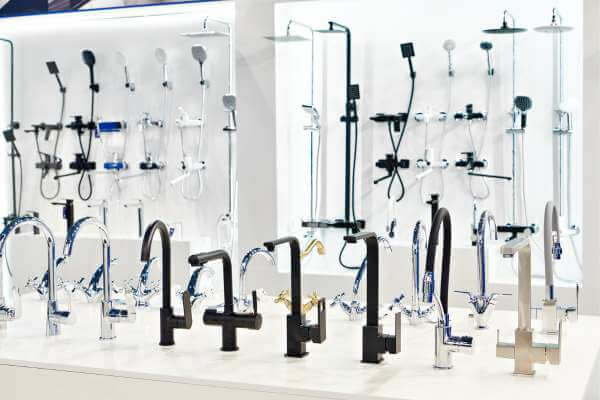If you’re asking yourself “Why is my Touchless Faucet not Working”, Touchless faucets can sometimes experience maintenance issues that need to be addressed. In this article, we will discuss some common touchless faucet maintenance issues and how to solve them.
Most common maintenance issues:
1. Water isn’t flowing out of the faucet
If you hear a clicking sound from the pilot valve, the issue could be related to the membrane in the solenoid valve, and replacing or cleaning it may solve the problem. However, if there is no clicking sound, there could be other possibilities. Check the battery voltage, as a low voltage could indicate a short circuit in the sensor or cable or a flat battery, requiring a replacement. If the voltage is okay, test the pilot valve using a test cable. If it clicks, the sensor needs replacing, but if it doesn’t, the entire solenoid valve requires replacement. When the voltage is below 5.9V and water isn’t flowing, it could be due to a clogged pilot valve, and the solenoid valve must be replaced. Note that replacing only the pilot valve isn’t possible, and the whole solenoid valve needs to be replaced.
2. The water flow doesn’t stop
In case the pilot valve membrane gets contaminated by dirt or impurities present in the water, it may result in a leakage issue. To fix this problem, you can either replace the pilot valve or clean the membrane. To prevent faucet leaks from happening, it is crucial to install litter filters and one-way valves along with the faucet. These filters and valves can help to keep impurities out of the faucet and prevent them from reaching the pilot valve, thereby reducing the chances of leaks occurring.
3. The indicator light on the sensor is flashing red
This indicates that the battery has run out of charge and requires battery replacement.
4. The batteries deplete their charge rapidly
If the batteries drain quickly, it is possible that the sensor is defective and drawing excessive power, resulting in battery depletion. Replacing the sensor should resolve the problem. Typically, with a properly functioning sensor, the batteries can last for several years. To replace the sensor, it is necessary to dismantle the faucet.
How long should a touchless faucet last?
Usually, the battery has a lifespan of 2 to 5 years. However, if the battery voltage drops below 5.9V, and the faucet doesn’t dispense water, it could mean that the pilot valve is obstructed with dirt or debris. In such cases, the voltage level is not sufficient to trigger the opening or closing of the pilot valve, thus rendering the faucet inoperable. To solve this issue, the solenoid valve needs to be replaced.
Can a faucet just stop working?
Although leaks can occur in any type of faucet, it’s uncommon for them to completely stop functioning. In such instances, a prudent plumber would suspect that the problem lies within the water system.
Why did my touchless faucet’s sensor quit working?
There could be various reasons why the sensor on your touchless faucet stopped working. One of the most common causes is a drained or faulty battery. Dirt or debris accumulation on the sensor or in the pilot valve could also be a factor. Additionally, a malfunctioning solenoid valve or damaged cable could also affect the sensor’s functionality.
Conclusion
In conclusion, touchless faucets are a great addition to any home or public restroom, but they do require regular maintenance to ensure they work correctly. If you experience any of the maintenance issues discussed in this article, follow the recommended solutions or consult a professional plumber for assistance. With proper maintenance, your touchless faucet will continue to provide hygienic and convenient handwashing for years to come.


 Hi, my name is Debra Klein and I love modern kitchen designs! As a product reviewer, it’s my mission to help homeowners choose the right modern kitchen accessories for their homes. I want to give them the best solution possible so they can make the best decision for their needs. Thanks for reading!
Hi, my name is Debra Klein and I love modern kitchen designs! As a product reviewer, it’s my mission to help homeowners choose the right modern kitchen accessories for their homes. I want to give them the best solution possible so they can make the best decision for their needs. Thanks for reading!




